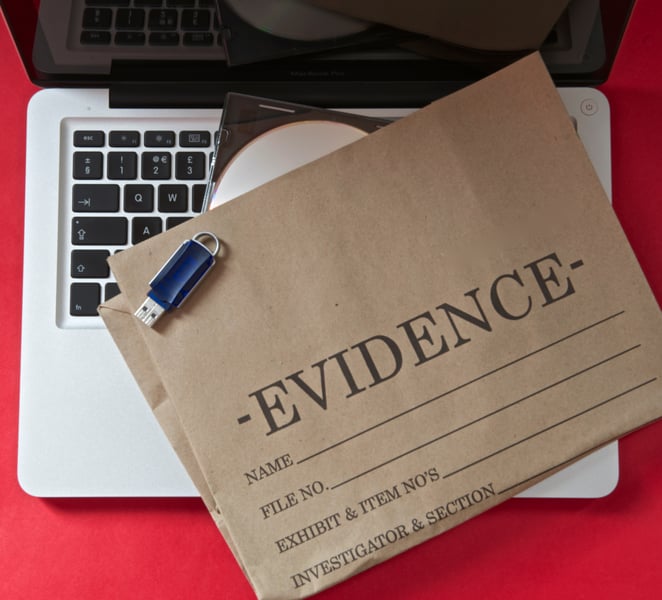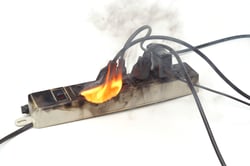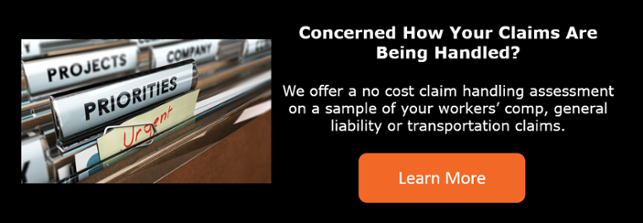
4 Best Practices for Preserving Evidence

The preservation of evidence is a significant step in the claim handling process. When it is done correctly, and in a timely manner, it will assist in determining liability as well as controlling claim costs. There are best practice steps to take in preserving evidence to ensure the claim is adjudicated efficiently and reduce the overall processing time and cost.
Most often, claims adjusters may not have the proper experience or knowledge in preserving evidence and conducting an investigation. However, by following best practices, and hiring the appropriate experts, liability can be determined.
A Dorm Room Fire
We are currently handling a claim for fire loss at a university dormitory caused by an electrical fire. A student had a bug repellent device and a desk lamp plugged into a surge protector which was provided by the university. The student and her roommate were not in their dorm when the fire started.
The fire was extinguished and fortunately no one was hurt. There was considerable water damage from the sprinkler system to the student’s room, as well as surrounding rooms on the same floor and 2 floors below. Current estimated cost of this claim is approaching $400K and does not include any claims from other students, for damage to personal property.
The university immediately secured the evidence which included the surge protector, the bug repellent device, the lamp, and receipts for the purchased items. They then filed a 1st party claim with their insurance carrier who is investigating the claim. All manufacturers were put on notice of the fire because depending on the findings of the investigation, one of them may be liable for the damage.
This particular dormitory was built in the 1950’s and could be a significant factor when determining the cause of the fire. Part of the investigation will be to determine if the building was up to date on all electrical and fire code rules.
Best Practices for Preserving Evidence
 #1 – Properly secure the evidence
#1 – Properly secure the evidence
Evidence related to the claim will assist in determining liability. In this case, the insurance carrier for the university secured the evidence. All parties involved have the right to view the evidence and be present when the inspection takes place or perform their own inspection. For this claim, there are four parties’ insurance companies that have the right to view the evidence:
-
The university
-
The student (she had renters’ insurance)
-
The manufacturer of the desk lamp
-
The manufacturer of the bug repellent
The job for each carrier is to determine liability and protect their own insured in the event that another carrier tries to put the blame elsewhere.
It is very important to hold the evidence until a decision is made, a claim is paid out, or a release is secured. The company holding the evidence will always ask the involved parties multiple times before destroying or discarding any evidence.
#2 - Obtain recorded statements
This is the most accurate way of determining liability. It is always good to get a first-hand account of the accident from the claimant or anyone else involved.
#2 - Obtain recorded statements
This is the most accurate way of determining liability. It is always good to get a first-hand account of the accident from the claimant or anyone else involved.
#3 - Hire cause and origin experts (C&O)
Some states do not require an investigation unless there was a fatality, or arson caused the fire. This is a good time to bring in a C&O expert because they will perform the necessary investigation to determine the cause of the fire. C&O experts will secure evidence that may not be apparent to an untrained firefighter or adjuster. In a case such as this, the C&O expert may decide to remove the outlet from the wall for further analysis or inspect other extension cords in the room.
#4 – Secure photographs or videos of the scene
Photographs and video will assist in determining liability. It is best to do this as soon as possible before anything is moved or remove.
Conclusion
A trained adjuster who has experience in fire claims will follow the above best practices during the claim handling process to be sure accurate conclusions are made. Adjusters are trained to be proactive. If they feel there is anything amiss, they will ask their client if they want to hire a C&O expert. Our main objective is to minimize the claim and its duration, protect the insured, and protect our client. A seasoned adjuster will go above and beyond to meet their client’s objectives, even if it takes additional time and effort to get this accomplished.


